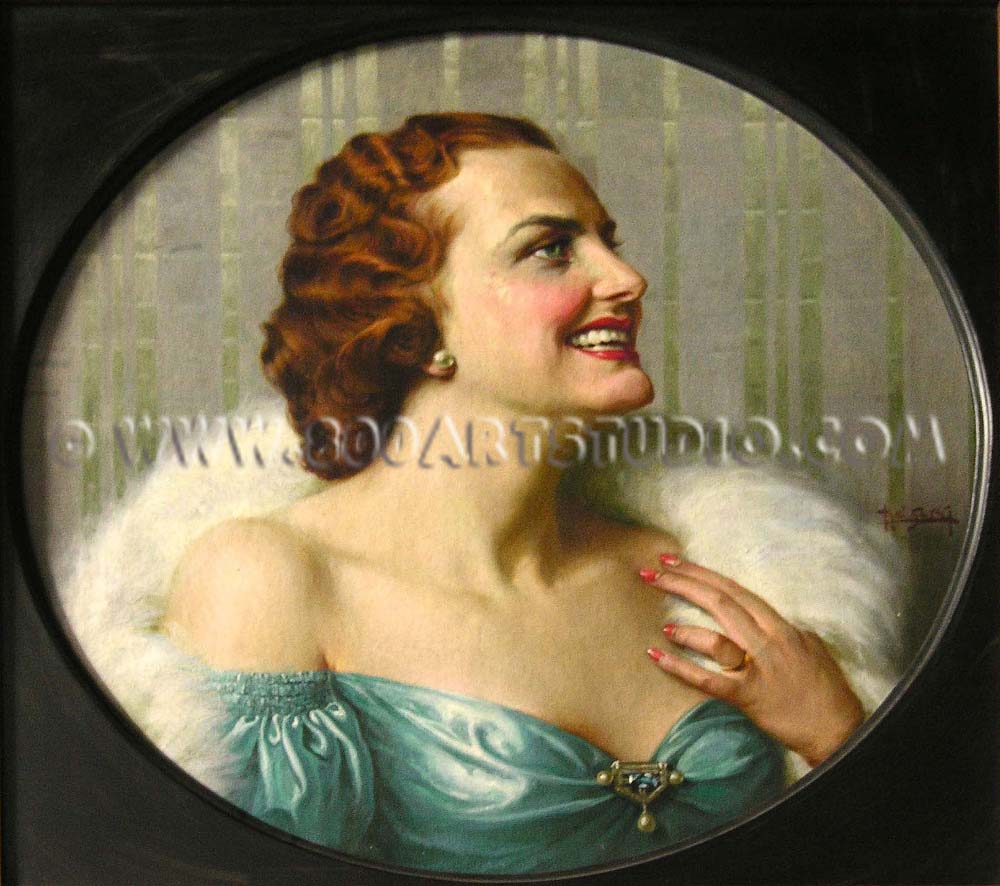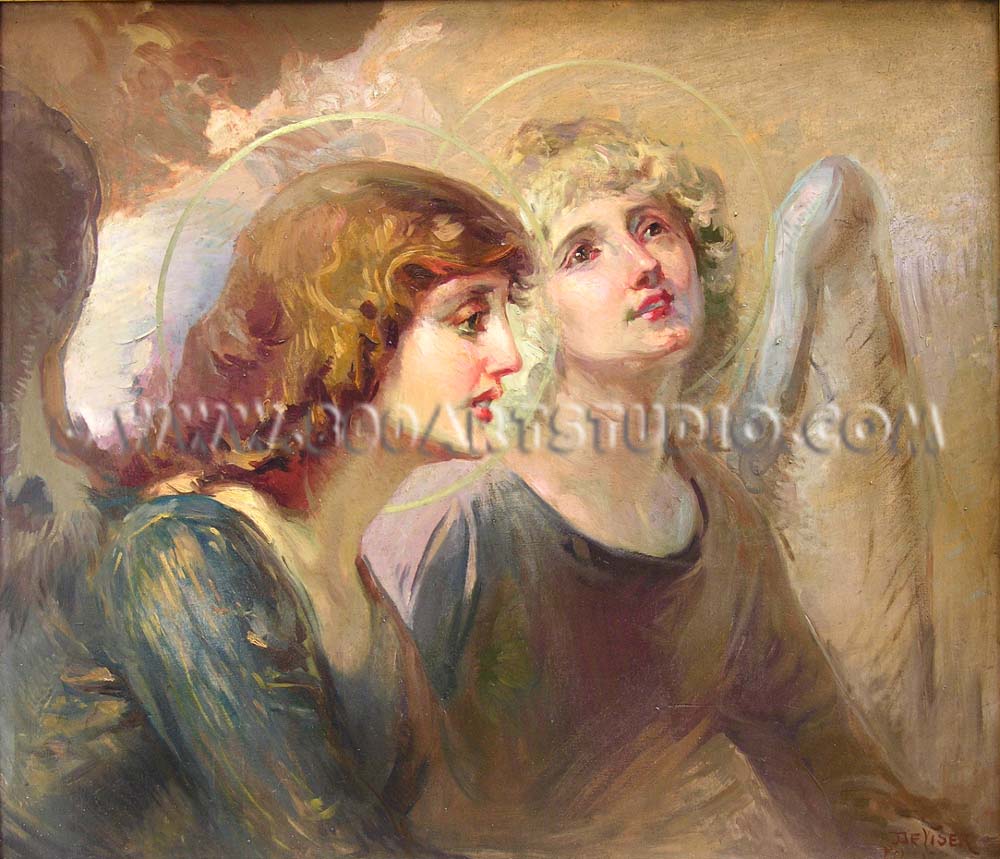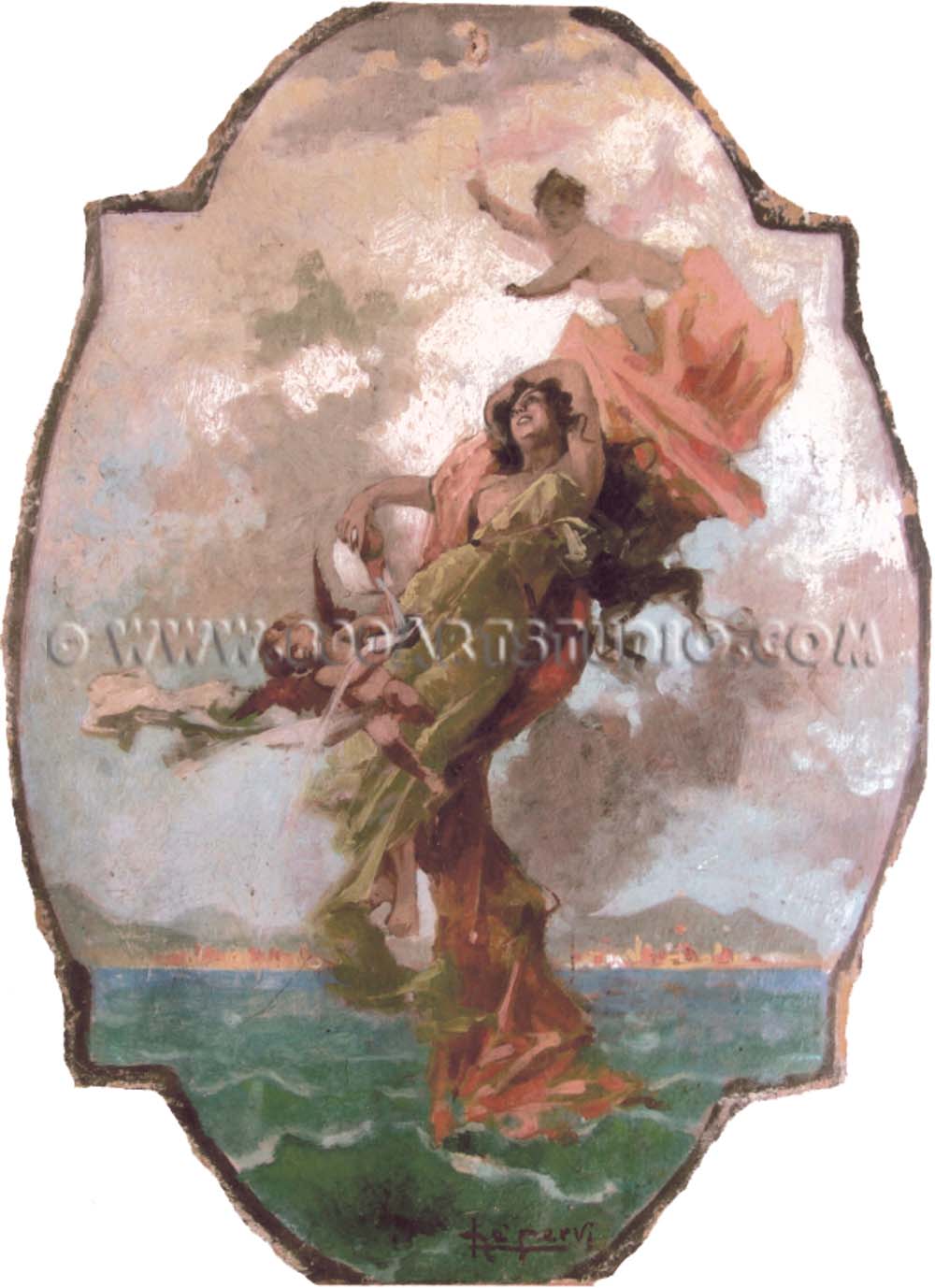The son of an artist father, Pietro, who painted religious works, De Servi was “an artist who depicted the drawing room, upper middle class patronage, series of family portraits and portraits of famous people, moving from the Classical style of his early works to the Romanticism of his early maturity and the Realism of his maturity” (A.Tagliasacchi, Introduction to the exhibition catalogue Luigi De Servi, 1863-1945, Lucca 2001).
The only internationally famous artist from Lucca, he had a sparkling, cosmopolitan personality. A collector, antiquarian and aesthete, De Servi worked untiringly between Lucca and Buenos Aires, Paris and London and Genoa, finally returning to his town of birth. The first time he went to Argentina was in 1883. In the space of a few months De Servi established himself as a portrait artist, gaining commissions from families from the rich political élite of Argentina. In 1884 he painted the frescoes in the “Casa Rosada” in Buenos Aires. A little later he received a government commission for the decoration of the portico at the entrance to the La Plata Museum and, in 1886, for the vestibule of the Chamber of the Senators of Buenos Aires. After a brief period back in Italy, in 1889 De Servi was in Argentina again where he continued to work intensely.
In 1890 De Servi returned to Lucca, set up a studio, and, together with the artists Michele Marcucci and Domenico Martinelli, both from Lucca, executed fresco work in the twelve arcades of the city cemetery. After a few months in London, probably between 1891 and 1892, where he mainly worked on portraits, and a short period spent in Paris, De Servi returned to Italy. In 1894 he moved to Genoa where he lived for four years carrying out important public and private commissions. At the beginning of the century Genoa continued to be a source of prestigious commissions, for example the frescoes for Genoa’s Brignole railway station in 1905.
Following another stay in Argentina, from 1910 to 1914, during which time he decorated the ceiling of the Presidential State Room in the Government Building, De Servi returned to Lucca where he opened his first personal exhibition in the exhibition room of the “Istituto Musicale Pacini” at the “Teatro del Giglio”. This was followed in 1918 by an exhibition with 11 works executed during the period of the war that he spent in his town of birth. These included: “Madonna della Pace” (The Madonna of Peace), “Ritratto di Mario Davin” (Portrait of Mario Davin), “Ritratto della contessa Isabella Lamba Doria Sardi e figli” (Portrait of Countess Isabella Lamba Doria and her children), “Autoritratto” (Self-Portrait).
The 1920’s and 30’s were marked by a succession of exhibitions and recognition for De Servi who, in 1924, came out in full support of Fascist ideology. Of note are the exhibition held in Rome in 1926, in the foyer of the “Teatro Nazionale”, the personal exhibition at “Circolo Lucchese” and the “Grand Hotel Royal”, Viareggio, both in 1931, and in 1939, he showed at the Geri Gallery, Milan.
Following a long illness De Servi died in Lucca on 25 June 1945.
Bibliography
M.Bompani, La vita dell’artista, Luigi De Servi, 1863-1945, catalogue of the Lucca 2001 exhibition.
Written by: Gioela Massagli – Translated by: Catherine Biggerstaff
© Studio d’Arte dell’800




